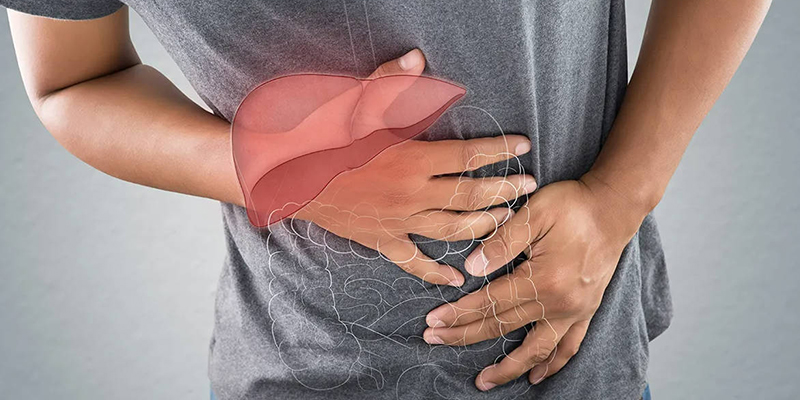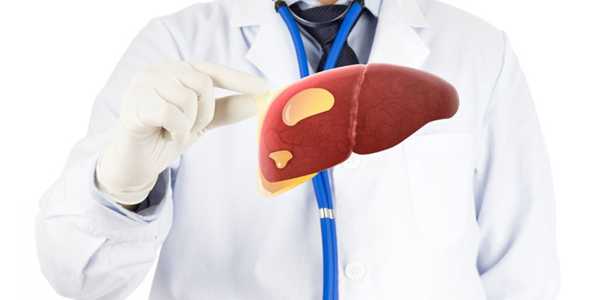Health & medical treatment
What Are The Signs And Symptoms Of Liver Cancer?
Liver cancer poses a considerable health threat, ranking among the leading causes of cancer fatalities globally. According to the World Health Organization, it accounts for nearly 900,000 deaths each year, highlighting its profound impact on health systems worldwide.
Liver cancer poses a considerable health threat, ranking among the leading causes of cancer fatalities globally. According to the World Health Organization, it accounts for nearly 900,000 deaths yearly, highlighting its profound impact on health systems worldwide.

Early detection of liver cancer is paramount, as identifying the disease in its initial stages can significantly enhance treatment outcomes and survival rates. Patients diagnosed early are often able to access more effective care, underscoring the necessity for awareness regarding the symptoms of liver cancer. This article explores the various signs and symptoms associated with liver cancer, aiming to equip readers with the knowledge to recognize potential warning signals. By being aware of these early indicators, individuals can take proactive steps to seek medical assistance, improving their odds of a favourable prognosis.
What Constitutes Liver Cancer?
Liver cancer is defined as the emergence of malignant (cancerous) cells within the liver. It primarily falls into two categories: primary liver cancer, which originates in liver cells, and secondary liver cancer, which occurs when cancer spreads to the liver from other areas of the body. Globally, liver cancer ranks as one of the most commonly diagnosed cancers, with approximately 905,677 new cases documented and an estimated 830,180 deaths attributed to the disease in 2020, as reported by the World Health Organization. This statistic positions liver cancer as the sixth most frequently diagnosed cancer and the third leading cause of cancer-related deaths.
Numerous risk factors contribute to the onset of liver cancer. Viral infections, particularly hepatitis B and C, significantly elevate the risk, as they can lead to liver cirrhosis, creating an environment conducive to cancer development. Additionally, chronic excessive alcohol consumption can cause gradual damage to liver cells, further heightening cancer risk. Obesity and Type 2 diabetes are also major contributors, often linked to non-alcoholic fatty liver disease (NAFLD), a condition that may progress to cancer. Furthermore, exposure to aflatoxins—noxious toxins produced by certain moulds found on crops like grains and nuts—has been associated with cases of liver cancer, notably in regions experiencing substantial aflatoxin contamination.
Notable Symptoms Of Liver Cancer
Persistent Abdominal Pain
One of the most discernible signs of liver cancer is ongoing abdominal pain, particularly pronounced in the upper abdominal area or specifically on the right side. This discomfort may vary from a dull ache to severe pain, often worsening after eating. Patients frequently describe it as fullness or pressure, sometimes confused with common indigestion. The pain typically arises as the liver enlarges, creating pressure on adjacent organs and tissues, signifying an urgent need for medical consultation if it becomes chronic or severe.
Presence Of Lumps Or Masses
Another concerning symptom of liver cancer is the emergence of lumps or masses beneath the ribs, especially on the right side. These palpable growths may be identified during physical examinations and could indicate abnormal liver growth. The discovery of such lumps should prompt immediate further assessment, as they could denote tumour presence, complicating liver functionality if left unaddressed.
Unexplained Weight Loss
Unintentional weight loss, particularly a loss of 10 pounds or more in a brief timeframe, is a warning sign that should never be disregarded. This symptom often arises from metabolic changes initiated by the cancer's progression, disrupting the body's ability to absorb nutrients properly and harming a person's overall health.
Changes In Appetite
Altering appetite is a symptom that may manifest as a severe reduction in hunger or the wish to eat. Patients may feel full after consuming only minimal food, leading to nutritional deficits. This symptom is often a sign of liver dysfunction, and any substantial changes in dietary habits should prompt a thorough evaluation by a medical professional.
Nausea And Vomiting
Gastrointestinal distress, including persistent nausea and vomiting, can often accompany liver issues. These sensations may be chronic and triggered either by the liver's toxic load or tumours affecting the organ. Tracking these symptoms is vital; if they persist, they may signal a significant underlying concern that demands therapeutic intervention.

Recognizing these symptoms promptly can facilitate early diagnosis and ultimately result in improved outcomes concerning liver diseases, including liver cancer. Ignoring these indications may delay critical treatment, ultimately compromising patient health.
Symptoms That Require Immediate Attention
Understanding liver-related symptoms is pivotal in early detection and urgent medical attention. Here are several significant warning signs that warrant an immediate visit to a healthcare specialist:
Jaundice
This condition manifests as yellowing of the skin and the whites of the eyes, resulting from an excess of bilirubin in the bloodstream. If the organ cannot process or eliminate bilirubin effectively, jaundice can indicate underlying liver dysfunction. Observing jaundice can be a critical sign of liver-related diseases, including hepatitis or cirrhosis, and demands swift medical attention.
Extreme Fatigue
While fatigue can often follow a strenuous day, the profound exhaustion associated with liver dysfunction differs markedly. This debilitating fatigue generally stems from the liver's compromised ability to detoxify the body and generate energy effectively. If routine rest fails to alleviate fatigue and is accompanied by other alarming symptoms, seeking healthcare advice may be warranted.
Persistent Itching
Chronic itching, or pruritus, can be distressing for individuals with liver problems. This discomfort typically arises from an accumulation of bile salts in the bloodstream when liver function deteriorates. This itching can affect various body areas and intensify at night, disrupting sleep patterns and overall quality of life.
Distended Abdomen
Ascites—characterized by fluid accumulation in the abdominal region—may result from cirrhosis or other liver diseases. A visibly distended abdomen serves as a significant symptom, indicating noteworthy liver impairment or other severe health conditions needing swift medical evaluation.
Changes In Urine And Stool Color
Observations of altered urine and stool colour can yield vital insights into liver health. Dark urine may signify elevated bilirubin levels, whereas pale or clay-coloured stools could suggest inadequate bile secretion into the intestines. Such variations may signal liver dysfunction or bile duct obstructions, necessitating further examination by healthcare professionals.
Early recognition of these symptoms is vital for sustaining liver health and averting severe complications. If these signs are present, timely medical intervention is crucial for appropriate evaluation and care.
When To Consult a Healthcare Provider
Potential liver cancer symptoms necessitate immediate medical consultation:
• Unexplained weight loss: Sudden weight loss without effort can be a significant warning sign.
• Persistent abdominal pain: Ongoing pain in the abdominal area that is not alleviated.
• Jaundice: Yellowing of skin or eyes hinting at possible liver dysfunction.
• Excessive fatigue: Chronic tiredness not improved by rest may indicate serious issues.
• Nausea or vomiting: Persistent instances of nausea or vomiting require attention.
• Loss of appetite: A dramatic shift in eating habits should not be overlooked.
• Abdominal swelling: Ascites can signify liver complications.
Not addressing these symptoms may result in a delayed diagnosis, drastically influencing treatment results. Treating these symptoms with seriousness is imperative, as early intervention dramatically enhances health outcomes.
Staying Vigilant For Your Health
Raising awareness about liver cancer symptoms is crucial in combating this formidable disease. Early identification dramatically improves treatment outcomes, providing patients a far better chance of recovery. It is vital for anyone experiencing symptoms to pursue proactive health checks and engage in open dialogues with their healthcare providers. Prioritizing your health by remaining vigilant and seeking guidance at the first signs of trouble can make a significant difference. Your proactive steps today may lead to improved well-being tomorrow.



